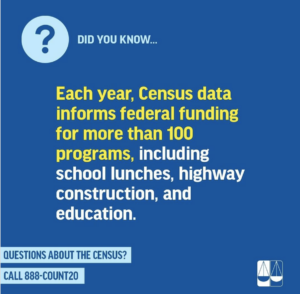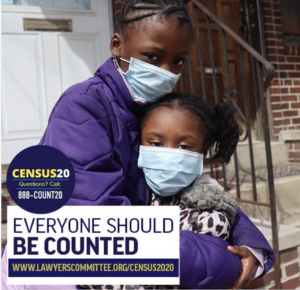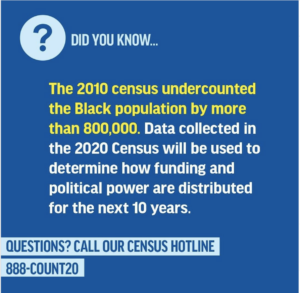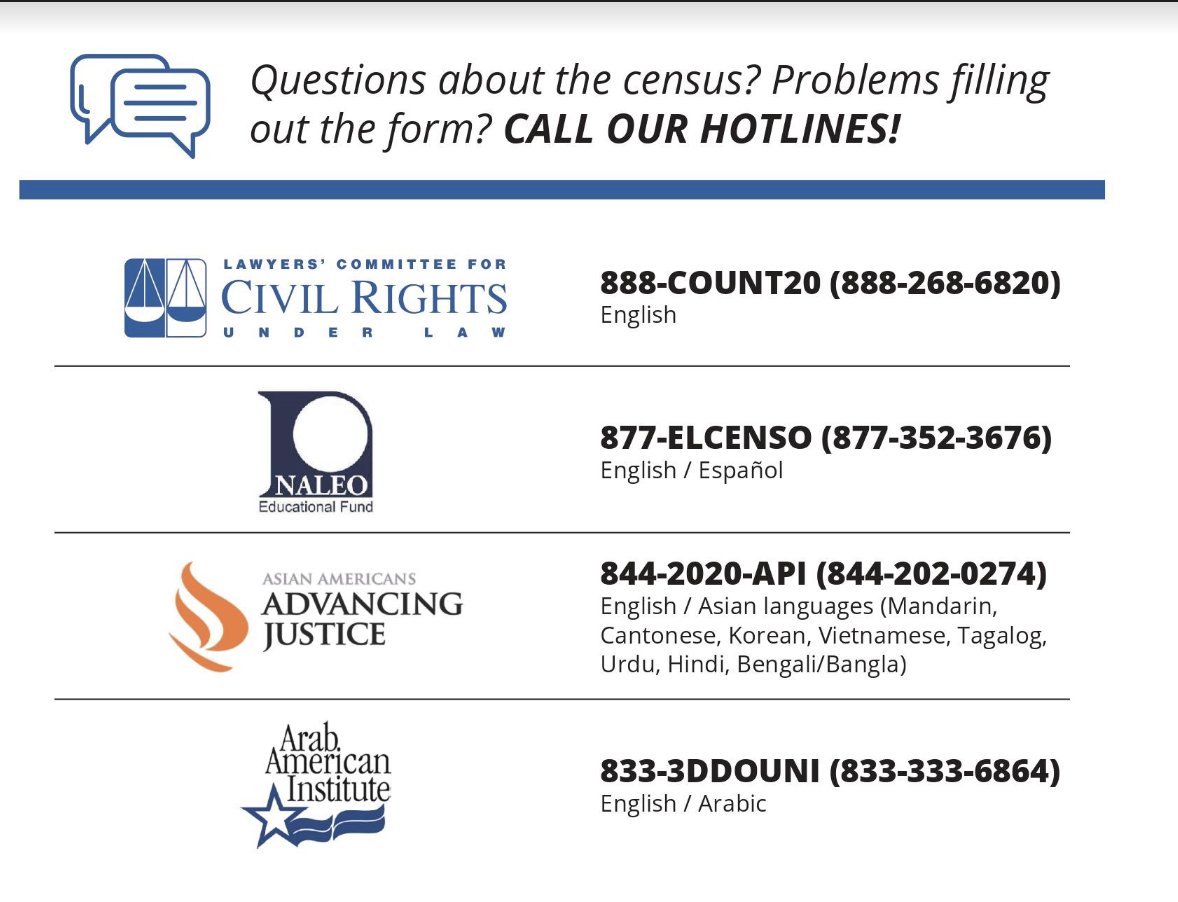Census 2020 and Redistricting

On April 26, 2021, the U.S. Census Bureau released the resident population data, which determines the number of seats assigned to the U.S. House of Representatives for all 50 states. As we move forward with the redistricting cycle, the Lawyers’ Committee for Civil Rights Under Law is working with community groups, partners, state coalitions, and others to ensure communities of color are prepared to engage with the redistricting cycle and secure fair representation. While the data received was very broad, more comprehensive redistricting data files will be available by September 30, 2021, and electoral districts will likely be drawn after this release. There are various resources available for those who would like to participate in drawing sample maps, advocate on behalf of their communities, and learn about the redistricting process.
Aside from congressional apportionment, the 2020 Census data is used to determine federal resource allocation and collect key demographic information about America’s changing population and workforce. The counting of the 2020 Census has officially ended, and further data from the count is being processed and made public in stages by the Census Bureau and U.S. Department of Commerce.
Redistricting
Redistricting is the process of redrawing federal, state and local electoral district boundaries, and occurs every 10 years after the census has been completed. The district someone lives in influences a number of factors of daily life, including representation in all levels of government, from local town councils to the U.S. House of Representatives, as well as elected representatives responsible for the amount of federal funding received for schools, assistance programs and more. Each state has its own way of redrawing districts – most use legislative bodies while others use independent commissions – with districts drawn based on population data from the census count and other factors.
Districts are drawn for the people, so communities must play a vital role in ensuring they are accurately represented. Sometimes, the district boundaries are drawn without engagement from community groups or in a way that divides communities. Community involvement is necessary for individuals to voice their concerns and advocate for their community’s shared interest.
The Lawyers’ Committee for Civil Rights Under Law uses public education, advocacy community engagement and litigation to ensure a fair redistricting process.
Publications and Resources:
Redistricting Principles:
There are a number of federal constitutional requirements, along with state-specific guidelines, that provide the necessary criteria for drawing election districts. Generally, these criteria include: population equality, compactness, the 1965 Voting Rights Act, preservation of the cores of prior districts, and more.
View the redistricting principles.
Drawing Districts:
Anyone with a computer can use Districtr or DRA2020, free, public web tools to draw districts and geographically define their particular communities. Districtr and DRA 2020 allow communities and advocates the ability to amplify their voice and share their plans. Justin Levitt’s All About Redistricting site provides additional resources helpful in the redistricting process.
Visit the Districtr, DRA2020, or All About Redistricting websites.
Data Resources: The Redistricting Data Hub & Princeton Gerrymandering Project:
The Redistricting Data Hub & Princeton Gerrymandering Project have additional data and tools to help provide community activists, researchers, nonprofit organizations and others with adequate resources to continue valuable redistricting and voting rights research and meaningful advocacy for fair and equitable districts.
Click here to go to the Redistricting Data Hub website.
Click Here to go to the Princeton Gerrymandering Project.
Public Education and Advocacy:
The Lawyers’ Committee for Civil Rights Under Law promotes redistricting education and advocacy through webinars, forums and workshops with partners and participating organizations in several states. Our goal is to empower communities to participate in the redistricting process by drawing and evaluating redistricting plans, and presenting plans and public comment at redistricting hearings.
The Participatory Redistricting Project:
The 2020 Participatory Redistricting Project (PRP) involves a partnership with the Lawyers’ Committee for Civil Rights Under Law, the National Conference of Black Political Scientists (NCOBPS) and participating colleges and universities. It is designed to provide students with the skills to advocate for community engagement in the legislative redistricting process and next round of reapportionment.
PRP trains students, professors, and community partners as redistricting experts, assists them in drawing redistricting plans of their federal, state and local jurisdictions, prepares them to present prospective plans/maps and evaluate proposed or adopted plans at redistricting hearings, and gives them the necessary tools to advocate for fair redistricting.
Resources
Census Resources:
- If you encountered problems filling out the 2020 Census, please fill out this form.
- If you are aware of an action (or lack of action) taken by the federal government that would impact the accuracy of the Census count, we want to hear about it. Please fill out this form.
- Blog: Census 2020 – Differential Privacy and What You Need to Know
- What You Need to Know About the Apportionment & Resident Population Counts
Redistricting Resources:
- View the redistricting timeline alert map.
- View the redistricting principles.
- Additional data and tools are available through the Redistricting Data Hub and the Princeton Gerrymandering Project.
- The Districtr, DRA2020, or All About Redistricting websites, which allow you to draw your own electoral map.
- Op-ed: You voted, now draw your election districts
The Census Case
Litigation
2020 Census Citizenship Question
On July 21, 2020, former President Trump issued an executive memorandum stating that undocumented immigrants would not be treated as persons under the Constitution, and would be excluded from the decennial Census count used to apportion congressional seats in each state for the first time in the history of the United States. Groups across the country, including the Lawyers’ Committee for Civil Rights Under Law, immediately filed lawsuits to challenge the executive memorandum, arguing it contradicted centuries of practice, and clearly violated the Census Act, the Enumeration Clause, and the Fifth and Fourteenth Amendments of the United States Constitution.
A three-judge panel of federal court judges in California issued a ruling, stating the executive memorandum violated the Census Act. The case was ultimately voluntarily dismissed, because the Census Bureau did not deliver the 2020 census result to former President Trump before his term ended, and President Joe Biden rescinded the executive memorandum during his first day in office.


The allocation of nearly $800 billion annually for federal programs and services
- An accurate count is needed for resources like education programs, job training, transportation improvements, and a host of other needed services in our communities;


The number of representatives for each state in the U.S. House of Representatives (reapportionment), and affects how districts are drawn (redistricting)
- An inaccurate count will result in flawed data used to draw election districts for your federal & state elected officials as well as your county commissions, city councils, and school boards.

